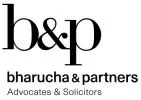Surrogate advertising has become fairly common in light of the ban on advertising certain products. Regulators and ASCI have taken steps to prevent this practice – most recently through the new guidelines on misleading advertisements issued under the Consumer Protection Act, 2019. This article analyses the evolution of the law relating to surrogate advertising.
The advertisement of alcohol and tobacco products in India was prohibited in 1994 through the Cable Television Network Rules, 1994 (CTN Rules). In response, manufacturers of these products resorted to more creative modes of advertising, including using surrogate products – the advertisement of which was legal – manufactured in limited quantities and marketed under the same brand name as the alcoholic beverages or tobacco products. Regulators have sought to curtail such surrogate advertising and have recently strengthened regulations prohibiting surrogate advertising through the Guidelines for Prevention of Misleading Advertisements and Endorsements for Misleading Advertisements, 2022 (Advertising Guidelines) issued under the Consumer Protection Act, 2019 (CP Act).
The Position at Law Prior to the Advertising Guidelines
Rule 7 of the CTN Rules (as amended in 20001 and 20082) prohibits advertisements which directly or indirectly promote the production, sale or consumption of alcoholic beverages, cigarettes and, or, other tobacco products, and other intoxicants. While the CTN Rules did not expressly proscribe surrogate advertising, they provided that advertisements of other products that used the same brand or logo as the alcoholic beverage, tobacco product, or other intoxicant would only be permitted subject to: (i) certain conditions; and (ii) review by the Ministry of Information and Broadcasting (MIB) and certification from the Central Board of Film Certification. Contravention of the CTN Rules is punishable with: (i) imprisonment for up to 2 years and, or, a fine of up to INR 1,000 for a first offence; and (ii) imprisonment for up to 5 years and, or, a fine of up to INR 5,000 for a second or subsequent offence.
In 2003, the Central Government enacted the Cigarette and Other Tobacco Products (Prohibition of Advertisement and Regulation of Trade and Commerce, Production, Supply and Distribution) Act, 2003 (COTPA) which amongst others prohibits the:
- Advertisement, directly or indirectly, of cigarettes or tobacco products by the person engaged in production, supply, or distribution of cigarettes and, or, any person having control over the media; and
- Promotion of the consumption of any trade mark or brand name of cigarettes or any other tobacco product in exchange for a sponsorship, gift, prize or scholarship given or agreed to be given by another person.
Contravention of the COTPA would result in: (i) imprisonment for up to 2 years and, or, a fine of up to INR 1,000 for a first offence; and (ii) imprisonment for up to 5 years and, or, a fine of up to INR 5,000 for a second or subsequent offence.
Several states have also enacted legislation restricting the surrogate advertising of alcoholic beverages and tobacco products.3
Judicial Enforcement
Although the CTN Rules, COTPA and state legislation sought to prohibit surrogate advertising of alcoholic beverages and tobacco products, jurisprudence on surrogate advertising is limited. That said, there is some indication of the courts' views on surrogate advertising and its prevention:
In TV Today Network Limited v Union of India4, when considering measures imposed by the MIB on a television channel for airing a supposed surrogate advertisement, the Delhi High Court opined that the advertisement – for a brand of club soda – gave rise to questions of surrogate advertising having occurred as the club soda bottles were marketed under the same brand as, and using similar packing to, All Seasons whiskey products.
In Mahesh Bhatt v. Union of India & Anr.,5 the Delhi High Court, while upholding the restrictions on commercial advertisements of cigarettes and other tobacco products under, inter alia, COTPA, held that the publication of a photograph of a celebrity wearing a jacket with a tobacco company's logo would not amount to surrogate advertising given that the photograph formed part of a news article.
The Supreme Court of India (Supreme Court) refused to restrict the use of the name 'Royal Challengers' – an apparent play on the whiskey brand 'Royal Challenge' – during the Indian Premier League.6
Recently, in a public interest litigation before the Supreme Court,7 it was alleged that the manufacturers of alcohol and tobacco products, routinely engage in surrogate advertising through brand extensions and event sponsorships which violate the Uttar Pradesh Intoxicating Liquor (Objectionable Advertisements) Act, 1976 (UP Act). The advertisements appeared to show the restricted products without expressly referring to them and, where they referred to unrestricted products did so in miniscule font. The Supreme Court observed that while there was no direct message to the public to solicit the use or sale of liquor, the advertisements were at the instance of entities whose principal business is the manufacture of liquor, and the obvious inference was that these advertisements were an indirect way of soliciting and promoting the sale and consumption of liquor. Accordingly, the Court ruled that the provisions of the UP Act were being contravened by advertisers in a clandestine manner, and issued directions to the state authorities to ensure that such advertisements were not displayed, shown on televisions or cinema halls, or circulated or published in any newspaper and magazines within the territory of Uttar Pradesh.
Self-Regulation
Complaints regarding surrogate advertising are usually filed with the Advertising Standards Council of India (ASCI), a self-regulatory body, with a fairly robust proscription on surrogate advertising incorporated in Clause 3.6 of ASCI's Code for Self-Regulation of Advertising Content in India (ASCI Code). When determining whether an advertisement is a surrogate advertisement, ASCI considers whether:
- The unrestricted product purportedly sought to be promoted through the concerned advertisement is produced and distributed in reasonable quantities, having regard to the scale of the advertising in question, the media used, and the markets targeted;8 and
- The concerned advertisement contains any direct or indirect clues or cues which could suggest to consumers that it is a direct or indirect advertisement for the product whose advertising is restricted or prohibited by law or by the ASCI Code.9
The ASCI Code, however, clarifies that the mere use of a brand name or company name that can be applied to a product whose advertisement is restricted or prohibited would not contravene the ASCI Code unless the advertisement is otherwise objectionable under Clause 3.6 of the ASCI Code. In spite of this apparent exception, ASCI, unlike the courts, has routinely censured brands to check the use of surrogate advertisements.
ASCI has published guidelines setting out the criteria for establishing whether advertisements of unrestricted products or services are legitimate brand extensions (Brand Extension Guidelines).10 The Brand Extension Guidelines prescribe the minimum turnover that must be attributable to the unrestricted product or service, the fixed asset investment for such products, etc. Whether an advertisement will be considered a legitimate brand extension or a surrogate advertisement will depend on whether the unrestricted product or service meets the criteria set out in the Brand Extension Guidelines. Illustratively, ASCI has held that:
- An advertisement for Absolut Music CDs appeared to be a surrogate advertisement for Absolute Vodka as, amongst others, the advertisement did not meet the criteria of the Brand Extension Guidelines;11
- An for MS Attraction Club Soda which displayed a bottle filled with coloured liquid that was 'coming soon' advertisement was a surrogate advertisement as the criteria set out in the Brand Extension Guidelines had not been met;12
- An advertisement for McDowell's No.1 drinking water appeared to be a surrogate advertisement for McDowell's No.1 Whiskey as United Spirits Ltd. had not provided details of actual sales and turnover and in-store availability to demonstrate that the unrestricted product – the drinking water – met the criteria in the Brand Extension Guidelines;13
- The sponsorship of Johnnie Walker – The Journey by United Spirits Ltd. was a surrogate advertisement for Johnny Walker whiskey as no evidence was provided to show that the criteria set out in the Brand Extension Guidelines had been met.14
The Advertising Guidelines
The Advertising Guidelines were issued by the Central Consumer Protection Authority (CCPA) on 9 June 2022 and mark the first time that the term 'surrogate advertisement' has been defined by Indian legislation. Under the Advertising Guidelines, a 'surrogate advertisement' is "...an advertisement for goods, product or service, whose advertising is otherwise prohibited or restricted by law, by circumventing such prohibition or restriction and portraying it to be an advertisement for other goods, product or service, the advertising of which is not prohibited or restricted by law...".15
The Advertising Guidelines specifically proscribe the surrogate advertisement or indirect advertisement of goods or services the advertising of which is restricted or prohibited by law.16 Clause 6(2) of the Advertising Guidelines also provides that an advertisement will be considered a surrogate advertisement or indirect advertisement if the advertisement:
- Directly or indirectly indicates or suggests to consumers that it is in respect of,
- Uses any brand name, logo, colour, layout and presentation associated with,
goods, products, or services whose advertisement is restricted or prohibited.
The proviso to clause 6 of the Advertising Guidelines, like the ASCI Code, clarifies that the mere use of a brand name or company name that can be applied to a product whose advertisement is restricted or prohibited will not render an advertisement a surrogate or indirect advertisement unless the advertisement is otherwise objectionable under the Advertising Guidelines. While some may argue that this could allow advertisers to continue marketing products with the same brand name, logo, etc. as those of a good, product or service whose advertisement is restricted or prohibited, this apprehension may be unfounded given that ASCI has routinely taken steps against errant advertisers in spite of a similar exception under the ASCI Code.
Issuing a blanket advertising ban on entities that manufacture goods or provide services the advertisement of which is restricted or prohibited would have a significant adverse impact on free trade and would prevent these entities from expanding their businesses (and brands) to other unrestricted products or services.
While there are some similarities between the Advertising Guidelines and the ASCI Code, the Advertising Guidelines are a significant step forward as they impose stricter consequences and heavier financial penalties for surrogate advertising. Where the CCPA is, after investigation, satisfied that an advertisement is false or misleading and prejudicial to the public interest, it may:
- Issue directions to discontinue or modify the advertisement;
- Impose penalties for contravention of the CP Act and the Advertising Guidelines – the penalty for a first offence may extend to INR 10 lakhs while the penalty for each subsequent offence may extend to INR 50 lakhs;
- Prohibit the endorser of a false or misleading advertisement from endorsing any product or service for a period of up to 1 year.
The Advertising Guidelines (and the CTN Rules for that matter) do not, however, address sponsorship and brand extension – both of which could constitute otherwise surrogate advertising. Unlike ASCI, the CCPA has not prescribed brand extension guidelines or separate criteria for legitimate brand extensions. It remains to be seen whether this will allow the CCPA greater flexibility to determine whether advertisements contravene the Advertising Guidelines or will instead infringe upon entities' ability to advertise unrestricted products and services which generate substantial revenue and are not simply surrogates for restricted products and services.
Footnotes
1. Cable Television Networks (Amendment) Rules, 2000, Ministry of Information and Broadcasting, Notification No. G.S.R. 710(E), dated 8 September 2000.
2. Cable Television Networks (Amendment) Rules, 2008, Ministry of Information and Broadcasting, Notification No. G.S.R. 104(E), dated 25 February 2008.
3. See, Section 9, Manipur Liquor Prohibition Act, 1991; Section 5, Nagaland Liquor Total Prohibition Act, 1989; Section 6, Tamil Nadu Prohibition Act, 1937.
4. W.P. (C) 1971/2021, CM Appls. 5764/2021 and 5765/2021 before the Delhi High Court
5. W.P. (C) No.18761 of 2005 & W.P. (C) No.23716 of 2005.
6. Court rejects plea against 'Royal Challengers', The Hindu, 28 April 2008 – available at https://www.thehindu.com/todays-paper/tp-national/Court-rejects-plea-against-lsquoRoyal-Challengersrsquo/article15212138.ece and last accessed at 17 August 2022 at 1500 hours
7. Struggle Against Pain v. State of U.P., 2019 SCC OnLine All 4624.
8. Paragraph 3.6(a) of the ASCI Code
9. Paragraph 3.6(b) of the ASCI Code
10. Guidelines for Qualification of Brand Extension- Product or Service – 18 March 2021 – ASCI – available at https://ascionline.in/images/pdf/final%2018.03.2021-%20guidelines%20for%20qualification%20of%20brand%20extension%20rev.pdf and last accessed at 1647 hours on 3 September 2022
11. 1923. @ 1912-C.2697 Pernod Ricard India Pvt. Ltd. (*) (Absolut Music CD), Consumer Complaints Council Recommendations of 2019-20, Advertising Standards Council of India, 2020 (available at: https://drive.google.com/file/d/1_y4j6dGpBqfVTY_7YMCh_ANoPJurGcRH/view ‒ last accessed: 17 August 2022 at 1500 hours).
12. 1802, @ 1912-C.2742 Maa Sheetla Udyog Pvt ltd - MS Attraction Club Soda, Consumer Complaints Council Recommendations of 2019-20, Advertising Standards Council of India, 2020 (available at: https://drive.google.com/file/d/1_y4j6dGpBqfVTY_7YMCh_ANoPJurGcRH/view ‒ last accessed: 17 August 2022 at 1500 hours)
13. 1803. @ 1912-C.2743 United Spirits Ltd (McDowell's No.1 Drinking Water), Consumer Complaints Council Recommendations of 2019-20, Advertising Standards Council of India, 2020 (available at: https://drive.google.com/file/d/1_y4j6dGpBqfVTY_7YMCh_ANoPJurGcRH/view ‒ last accessed: 17 August 2022 at 1500 hours)
14. 1936 @ 1912-C.2931 United Spirits Ltd.(*) - Johnnie Walker-The Journey (#The Travelling Billboard), Consumer Complaints Council Recommendations of 2019-20, Advertising Standards Council of India, 2020 (available at: https://drive.google.com/file/d/1_y4j6dGpBqfVTY_7YMCh_ANoPJurGcRH/view ‒ last accessed: 17 August 2022 at 1500 hours)
15. Clause 2(1)(h) of the Advertising Guidelines
16. Clause 6(1) of the Advertising Guidelines
The content of this article is intended to provide a general guide to the subject matter. Specialist advice should be sought about your specific circumstances.



